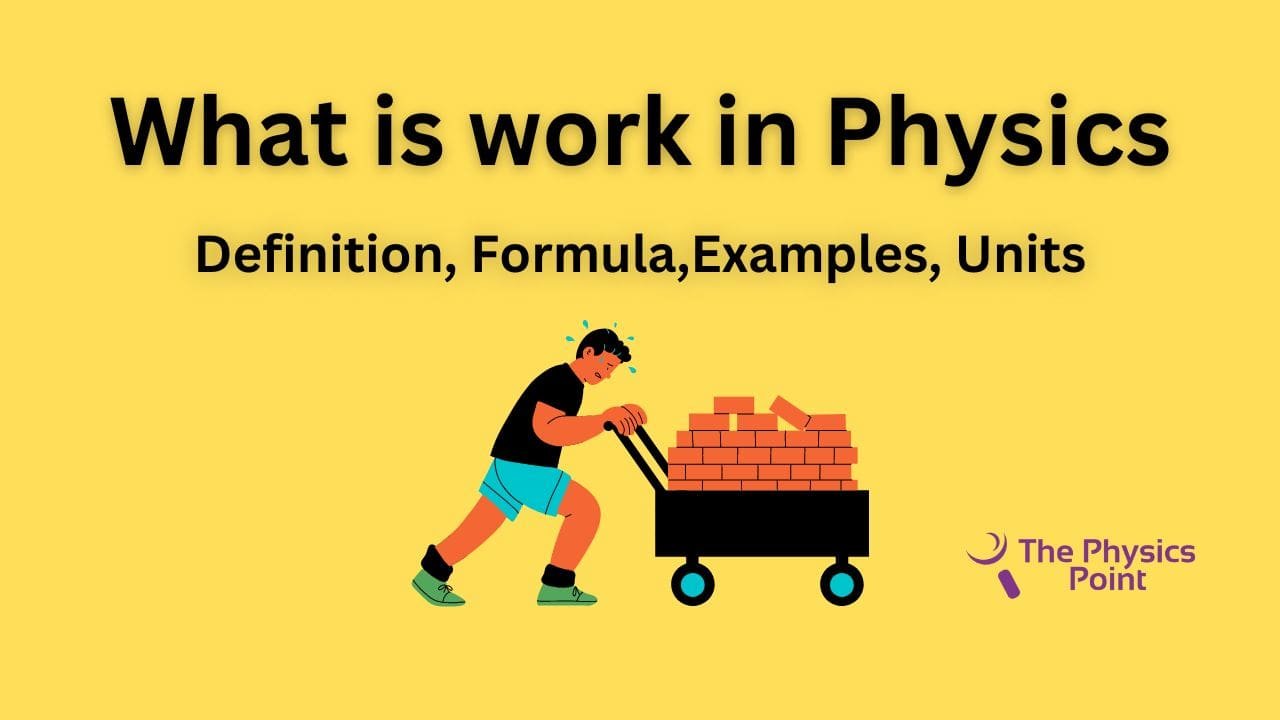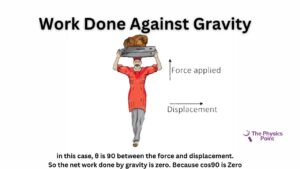What is Work in Physics? Definition, Formula, Example, Units

Hello, how are you guys? hope you all are fine. today we are presenting a very interesting topic- what is work in Physics? You heard somewhere that the person is very hardworking and does every work with very fine and on the time. But in the case of Physics, the work has another definition irrespective of daily speaking language. Work is a physical quantity in Physics. It has its own importance. Does work depend on many factors that we will discuss today in this important topic what is work in Physics?
Here we will discuss very important concepts of work with suitable examples and pictures. Because This is a very important topic in Physics and the work-energy theorem is totally based on it. which is the backbone of mechanics. some important questions from the exam point of view like what is work measured in, the definition of work in physics, a physicist’s definition of work, and what is work in science will discuss over here in the article what is work in Physics.
What is Work in Physics (Definition)?
Did you know what the actual definition of work in Physics is, work is the product of two vectors the first one is displacement, And the other is force. We can say very clearly that the work done on any object is calculated by the product of the force in the direction of the displacement and the Magnitude of the displacement. Work is a Scaler quantity.
We represent the work formula as follows-
W = (Fcosθ) d = F. d
Where,
- W represents the work done by the force
- At represent the force working on the object and D displacement of the object by the force
- θ is the angle made by the force and displacement vector.
Units Of Work
The SI unit of the work done is Joule. 1 Joule is defined as the work done by any force of 1 Newton which displaces an object one meter in the direction of the force. The formula of the work done found that the dimension of work done is [ML2T-2] which is the same as the dimension of energy.
Work Done due to Gravity
Suppose a heavy weightlifter lifts a heavy object of 50 kg and takes it off 2 meters from the ground perpendicular. Then the work done by the weightlifter against gravity is calculated by the given formula-
Work Done = (Mass of object × acceleration due to gravity) × Displacement
= (50×9.8) x 2 Joules
So the work done here comes out to 980 Joules.
The factors on which work is done depends
The work done on any object by a force depends on the following factors –
Force
Force is Pull or a push that can move a new object from one place to another. but not every time the force can make displacement in the body as in the case of limiting friction that we will study in the next articles. This is a vector quantity and it has both direction and magnitude as well as. If sometimes the force acting on any object is zero (0) irrespective of the state of that object, the work done comes out to be zero by that force.
Displacement
It is also a vector quantity. displacement gives the sorted distance between the final and initial position of the object. In case of zero displacements, the net work done by the acting force on the object is turned to zero. Let’s understand it with a simple example; suppose that you are trying to push a very heavy wall with all of your potential but you are unable to displace a bit of that wall. Then in this condition displacement is zero and the work done by you on the ball is also zero and it is said that you have performed no work on the wall irrespective of your hard work.
The angle between the force and displacement
This is also a very important factor to decide the work done by any force. you should know that work done on an object may be positive negative or also zero. it depends on the direction of force and the displacement of the object with respect to each other.
For example, in the case of friction of the motion or displacement. So the work done by the friction force is negative. Consider another example where work done is zero, you saw coolies at the railway station. They lift luggage on their head and move here and there. in this condition, the angle between the displacement and force is 90 degrees. According to the work done formula, there is a term of cos theta and Cos90 is equal to zero. So the total work done by the Coolies comes out to be zero.

Some Frequently Asked Questions (FAQs)
Ques. What is the formula of work?
Ans. The formula of work done is as follows: W = (Fcosθ) d = F.d
Ques. What is the dimension of the work?
Ans. The dimension of work done is [ML2T-2]. This dimension is the same as the dimension of energy.
Ques. What is the work done in the case, if the force is unable to make a displacement in the position of the body?
Ans. The work done is zero in this case. Because the displacement is zero so according to the formula w=fd, the total work done comes out to be zero.
The Conclusion
In today’s article, we discuss the work and what is work in Physics in detail. Some important questions like the formula for work done in physics, work done formula, total work done formula, etc are described very finely. Still, if you have any queries or have any suggestions to make us better you can use the comment section to contact us. If you found this article (what is work in Physics) helpful you can also share this with your friends so that they also get benefit from our website. We will meet again with a new article on Physics. Thanks!
